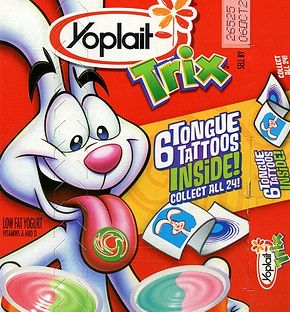![]()
You are welcome to share your thoughts on this article written by Ted Mininni, President of Design Force Inc, USA
Marketers have increasingly directed their messaging at children. Even for adult brands. Getting kids to endorse specific brands of cars, food and beverages as well as other consumer products has borne fruit. Kids have more influence than ever over the brands their parents purchase for them, and they have an increasing say over all family purchases in general.
The conventional wisdom: turn kids into brand advocates at an early age since they’re becoming consumers sooner than later. It’s no secret that kids have plenty of their own money to spend. According to YouthPulse, 8-21 year olds in the U.S. spent an estimated $123.5 billion in 2010. That doesn’t take into account how much their parents spent on them as well as younger kids last year. Nor does it tally family purchases due to children’s influence. In all, kids’ spending and that of their parents amounted to an estimated, whopping $1 trillion by 2005 according to the Advertising Educational Foundation.
Parents are more than willing to buy for their kids, but some marketing tactics have led to push back. Understandably so. Marketers need to be sensitive to the concerns of parents and address this issue rather than creating the perception of trying to snag their kids in a sneaky manner. Parents are wary of sites that entice their kids under the guise of online games that are actually selling brands that they may not otherwise approve of. By all means, marketers should use kids’ branded entertainment and product web sites to entertain, but they should also be highly selective and careful about aggressive, hard sell tactics parents won’t like when they learn about them.
Instead, brands that have values parents can endorse would be wise to reach out to them. Marketers should work to get parents’ support for their brands based on their positive attributes. Brands that demonstrate ways in which they can help parents in key ways can reap lasting rewards. Messaging that emphasizes brands are safe, beneficial or nutritious; deliver value while saving money; help teach kids; help them develop skills or knowledge; promote shared family entertainment and time that can be spent together all emotionally resonate with parents. Much has changed since parents’ youth, but one thing remains true: kids still want their parents’ approval, even though it isn’t cool to say so.
Separate fun-filled messaging for kids is best accomplished through age appropriate online sites, television networks and magazines. Kids respond to advertising in many forms. To capture their attention and endorsement, brands need to speak in an authentic voice since kids immediately sniff out fakes. When that happens, changing the message won’t save brands kids have already nixed; they’ll always be wary of them. Genuine messaging needs to be delivered directly to kids; it should also be couched in their “voice”. Successful brands use age-appropriate language to address their target audiences. Smart marketers let favorite characters and licensed properties do the actual “talking” in a creative manner to fully engage their audience.
Kids are highly imaginative, so innovative marketing communication is well received. Zany, humorous, colorful or action-packed marketing ideas play well to young kids and tweens. It’s important to get their attention in an engaging manner since kids are invariably doing more than one thing at a time. It’s ever more challenging to keep their attention in this modern environment, so messaging has to be inventive and spot on.
Rather than messaging alone, “showing” is an even better way to engage kids. When they see advertising depicting kids in their age groups having fun and engaging with specific toys or games, for example, they respond. There are countless ways to express happiness in verbal and non-verbal ways in advertising and kids respond to emotional cues, just as adults do.
When kicked up a notch, brand values that encompass the things children care most about—what they’re totally into from a pop cult perspective—become an integral part of their lives. Using favorite sports, music and fashion as links to kids’ brands strengthens them; cross pollinating brands with pop culture make them cool and more desirable.
The packaging angle
Marketing messaging brings parents and their kids into retail stores or e-tail sites, but packaging has the responsibility of closing the sale. Encompassing both brand values and cues from popular culture in a well-executed manner can be the deal maker when consumers are confronted with myriad category choices, all vying for their attention and purchase.
Photo: the Smurfs family
Nintendo has leveraged the popularity of its Wii Just Dance and Just Dance 2 video games to a new level thanks to its packaging. Joining the legendary Smurfs with a human family on its new “The Smurfs Dance Party” video, clearly capitalizes on the impact of Sony & Columbia Pictures’ blockbuster movie: “The Smurfs”. New songs and choreographed dance steps are designed to give whole families hours of fun and entertainment at home. Kids will respond to the cuddly blue Smurfs while parents respond to the heritage cues of these beloved characters from their own childhood memories, as well as the family values associated with them. The packaging delivers the Wii brand and its licensed partner brand’s assets as well as current cultural values in a convincing manner.
Photo: photo of Yoplait kid’s dairy from Flickr
Yoplait took a wholesome product from mom’s perspective—and a banal one from kids’ points of view—and made it hop, skip and dance off the shelf with the help of the Trix bunny. How to make yogurt so kid-specific and so much fun children would clamor for it? Yoplait brought sweeter, more intense flavors into kid-friendly packaging. After all, the product should fit into smaller hands, right? Giving the flavors inspired names: cotton candy/strawberry kiwi, raspberry rainbow/strawberry banana bash and triple cherry/wild berry blue could only appeal to kids. And how about splitting the cups with two brightly colored flavors instead of one?
The Trix rabbit dominates product packaging with his signature long, weepy ears and holds up two yogurt cups showing the bright, split colors like kaleidoscope eyes. Cartoonish and fun, this speaks directly to kids. It’s a clever way to showcase the product in garish splendor that promises great taste (and shhhh: nutrition.) Kids love this and moms can also endorse their children’s choice because it’s good for them.
Marketing messaging lays the groundwork for kids’ and parents’ acceptance of branded products but packaging makes them stand out from all of the competitors’ products on the shelf. It closes the sale. Making positive, emotional connections at this level leads to sales and brand loyalty. And at this point in consumer purchasing history, that makes all the difference.
About the Author

Ted Mininni is President of Design Force, Inc., a leading package and licensing program design consultancy to the consumer product and entertainment industries. He can be reached at 856-810-2277.

